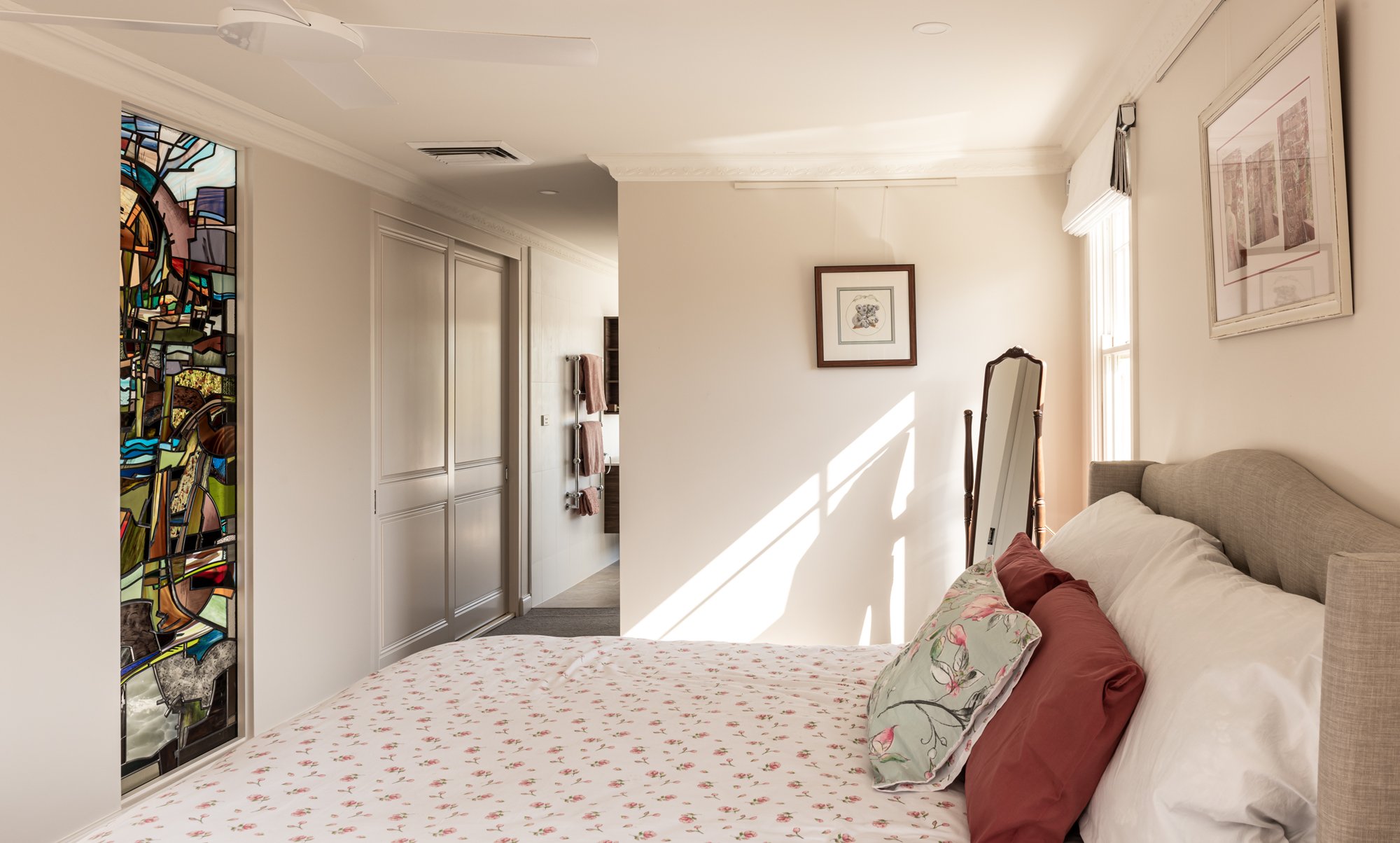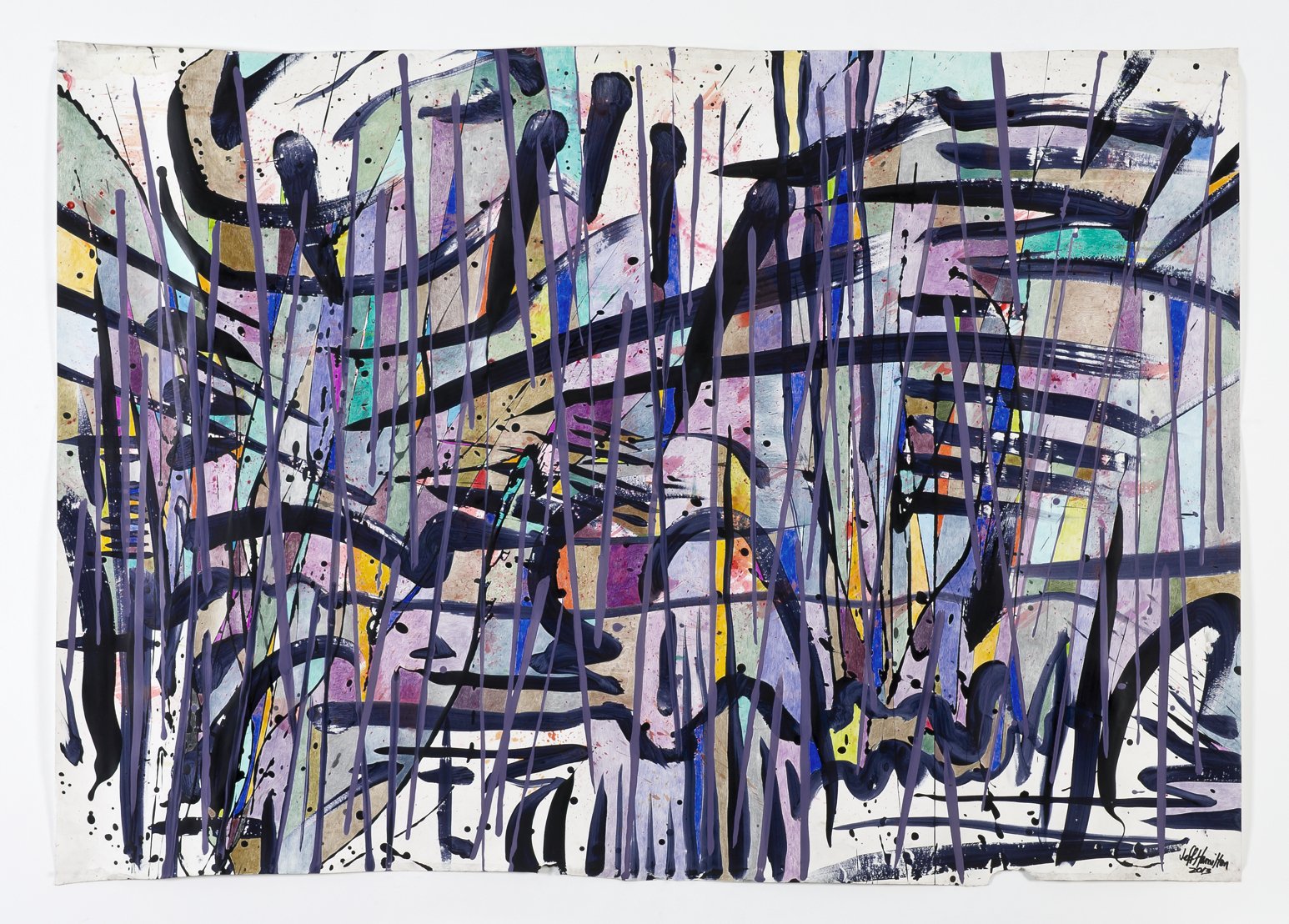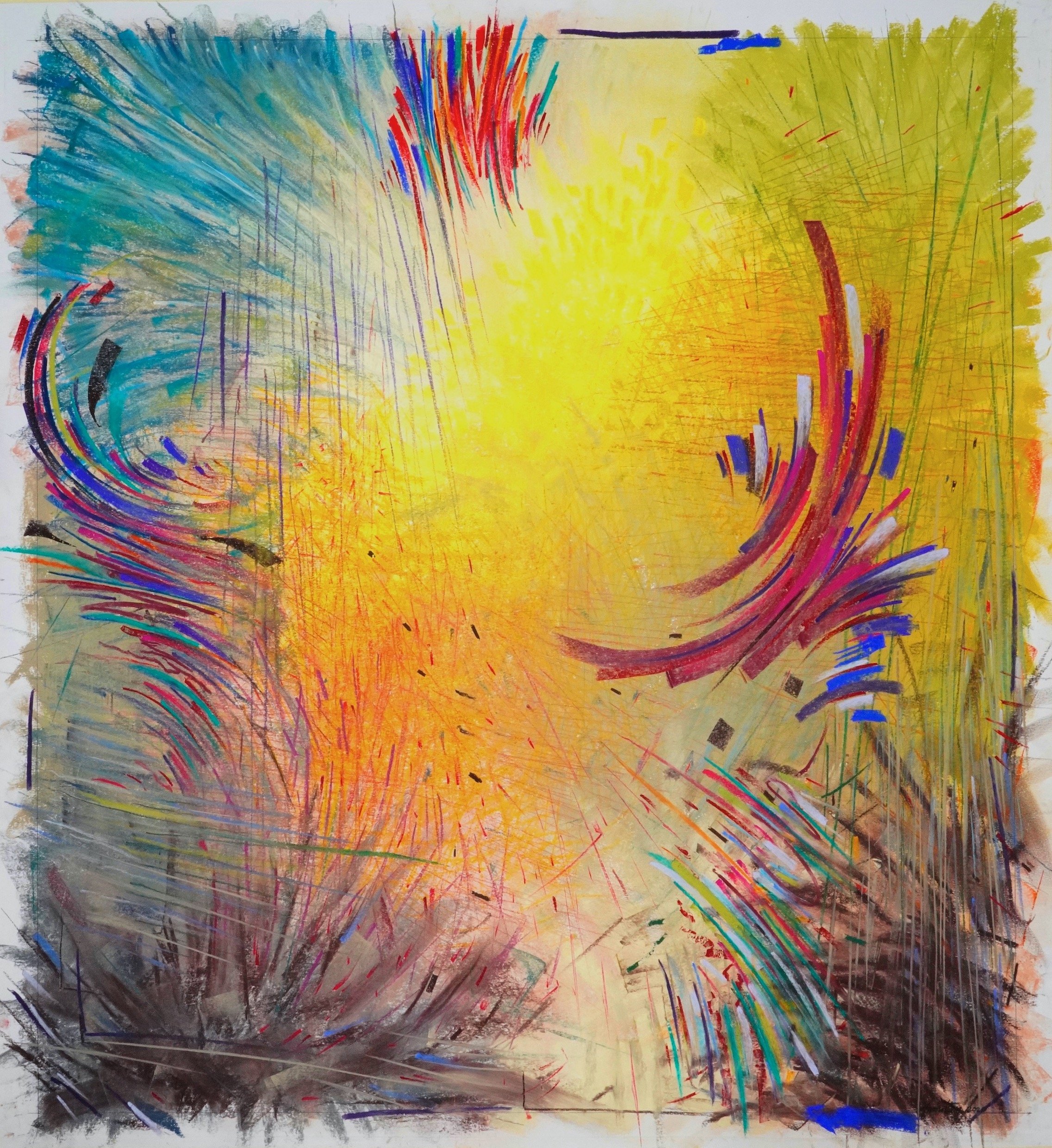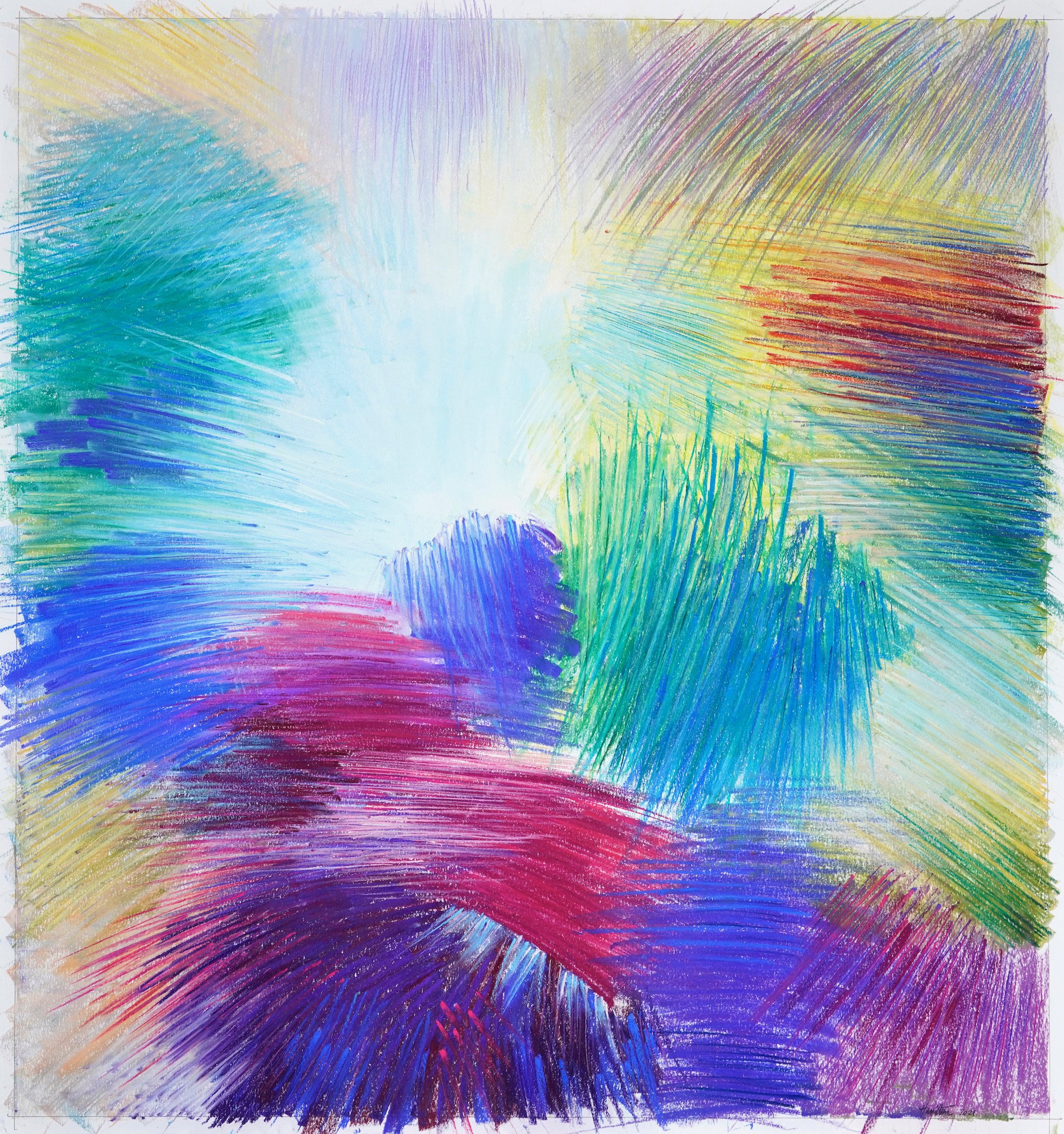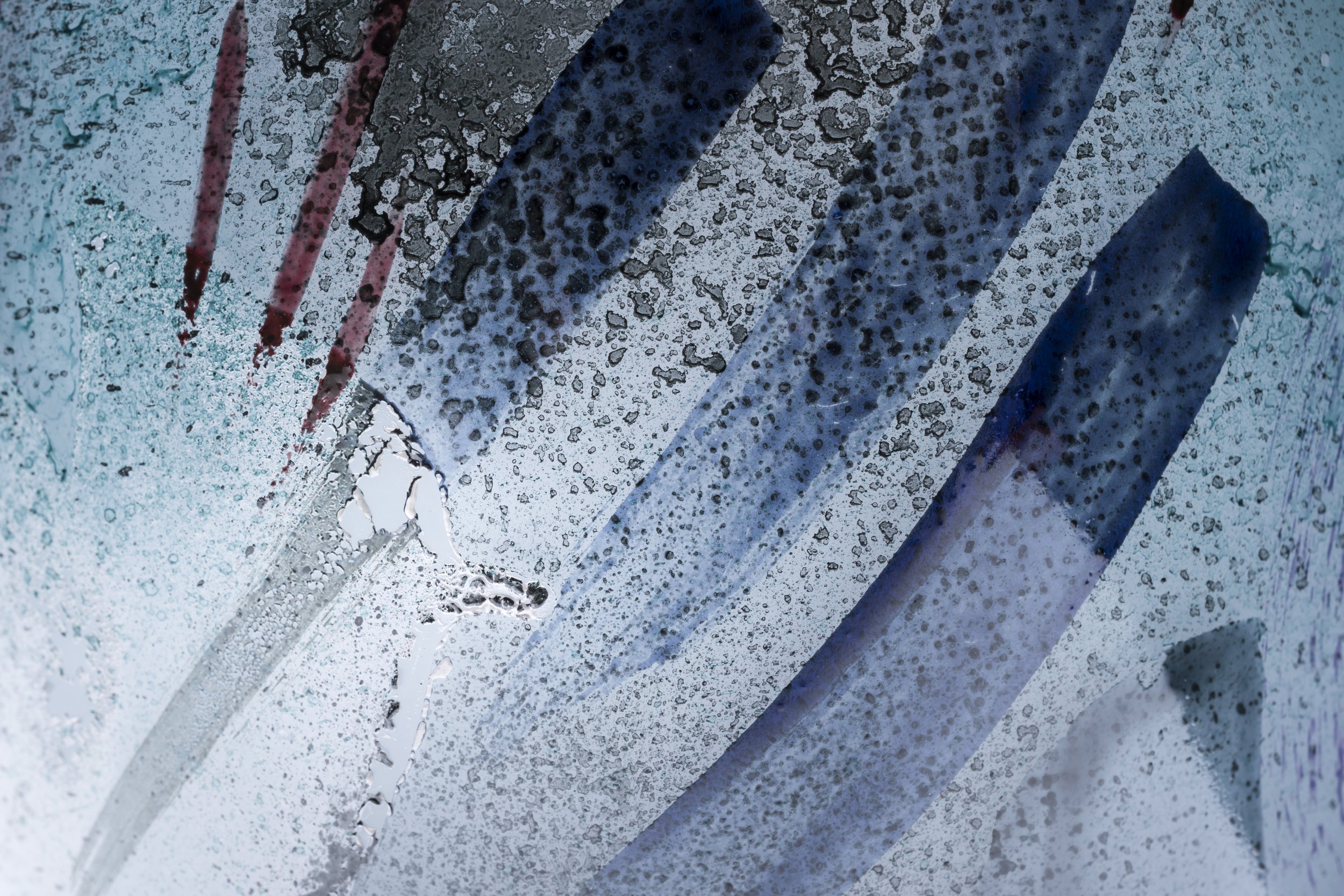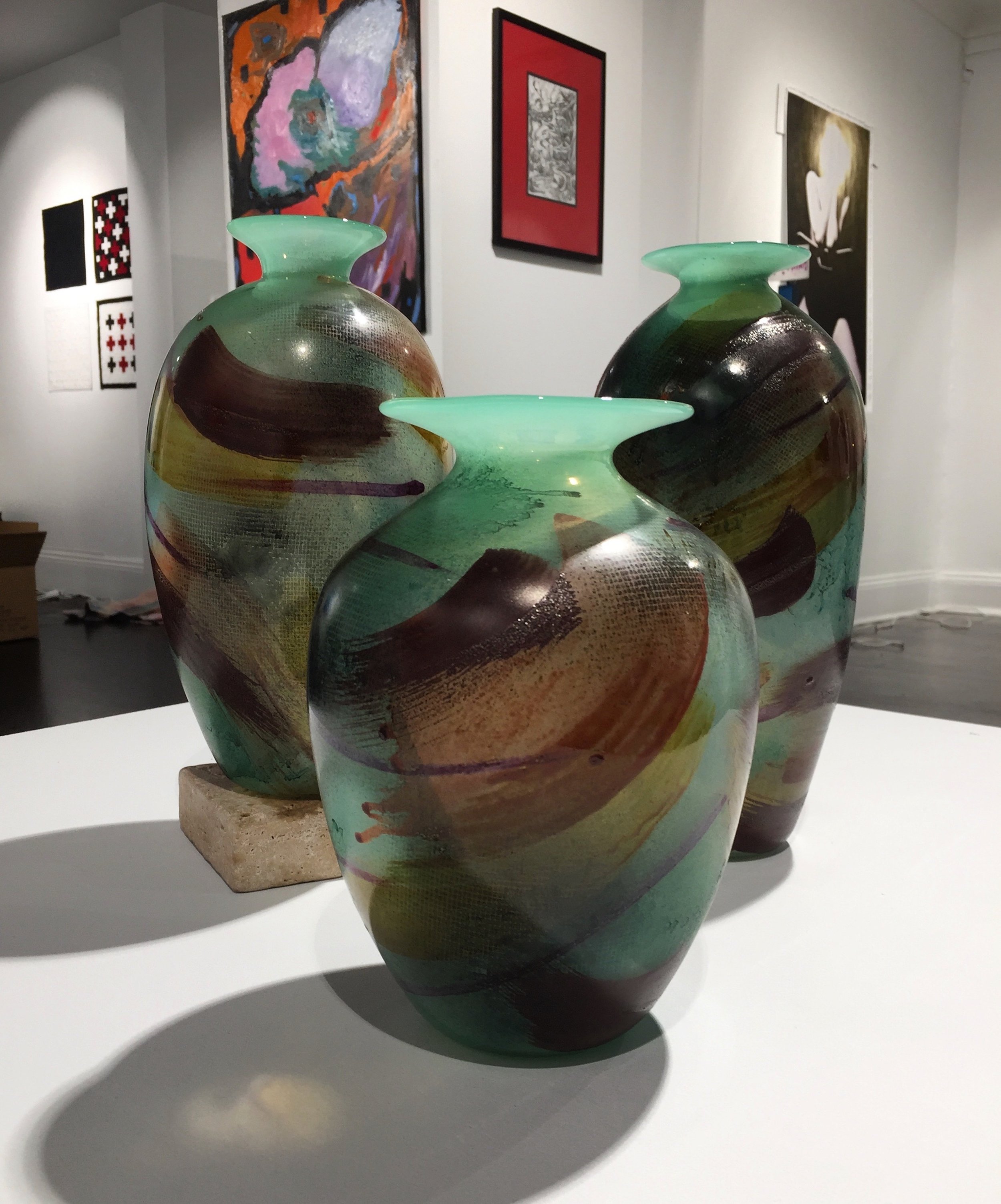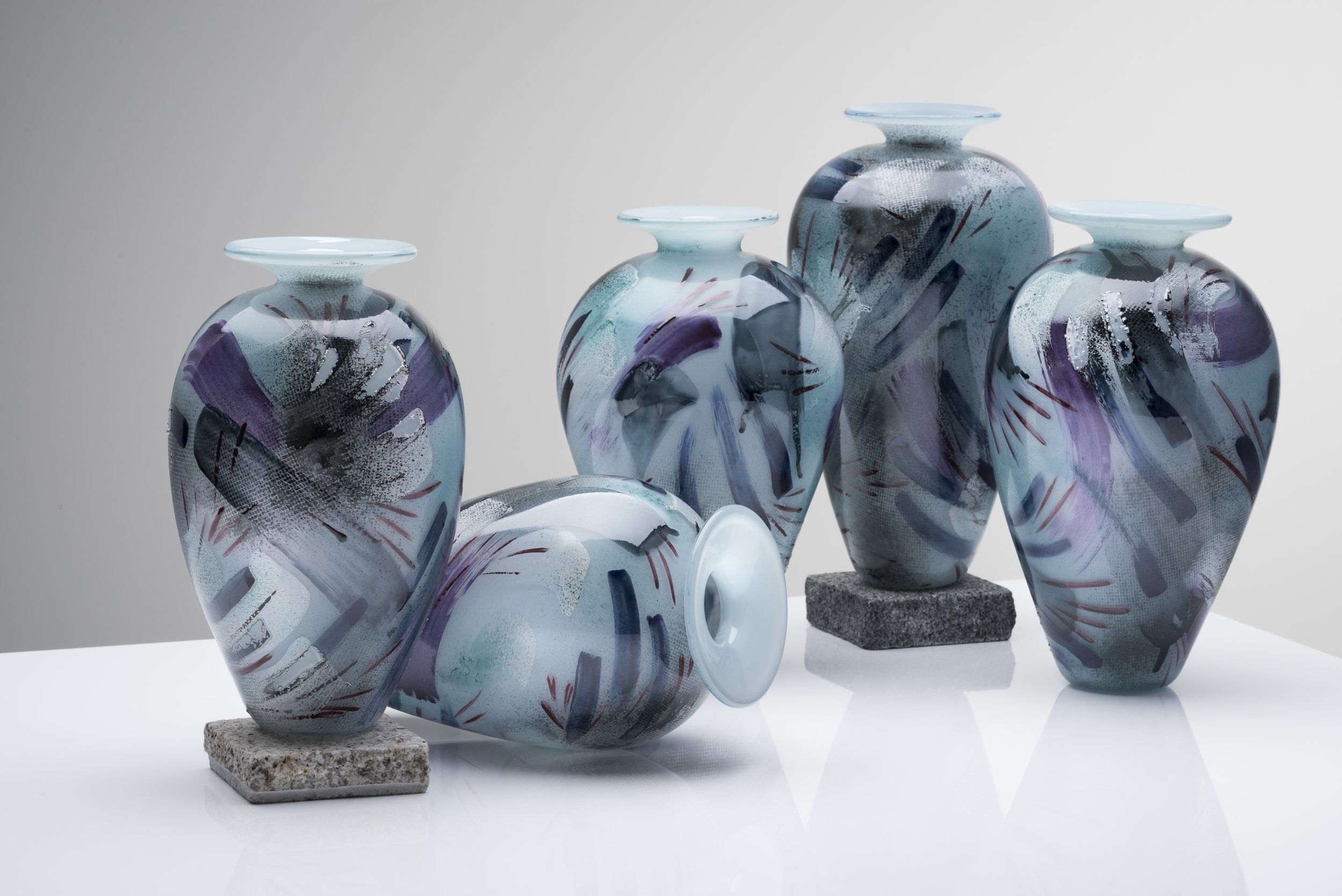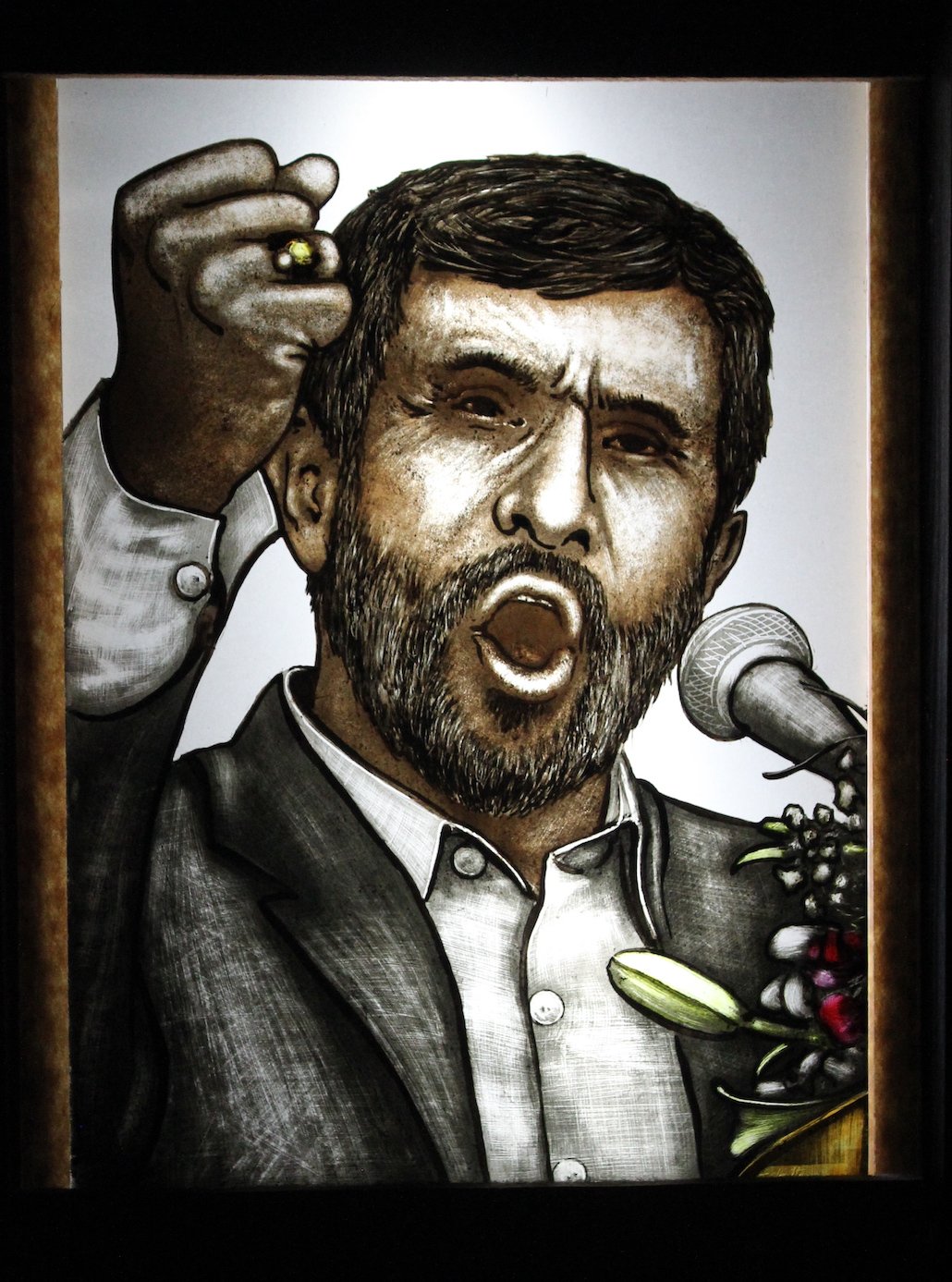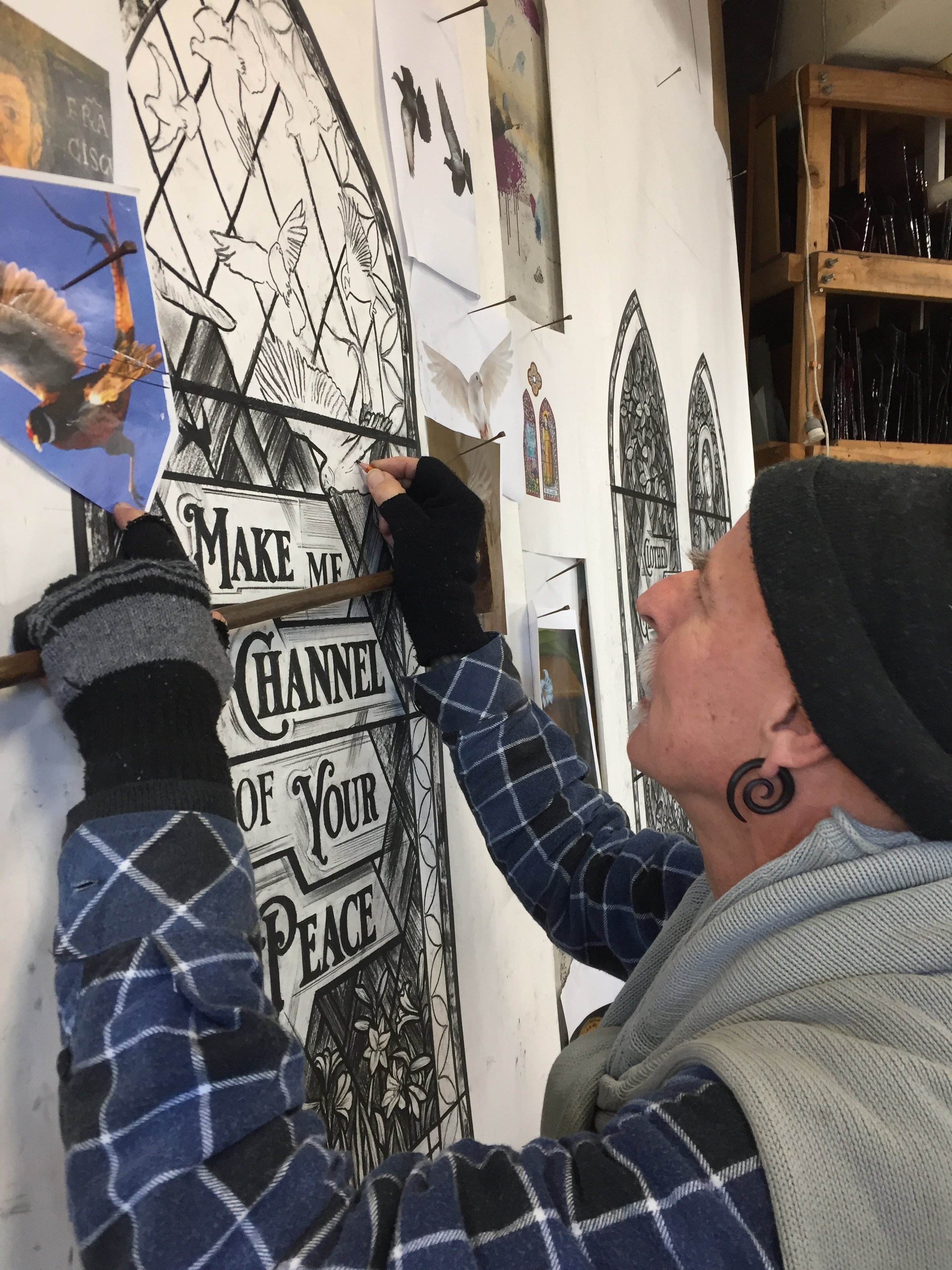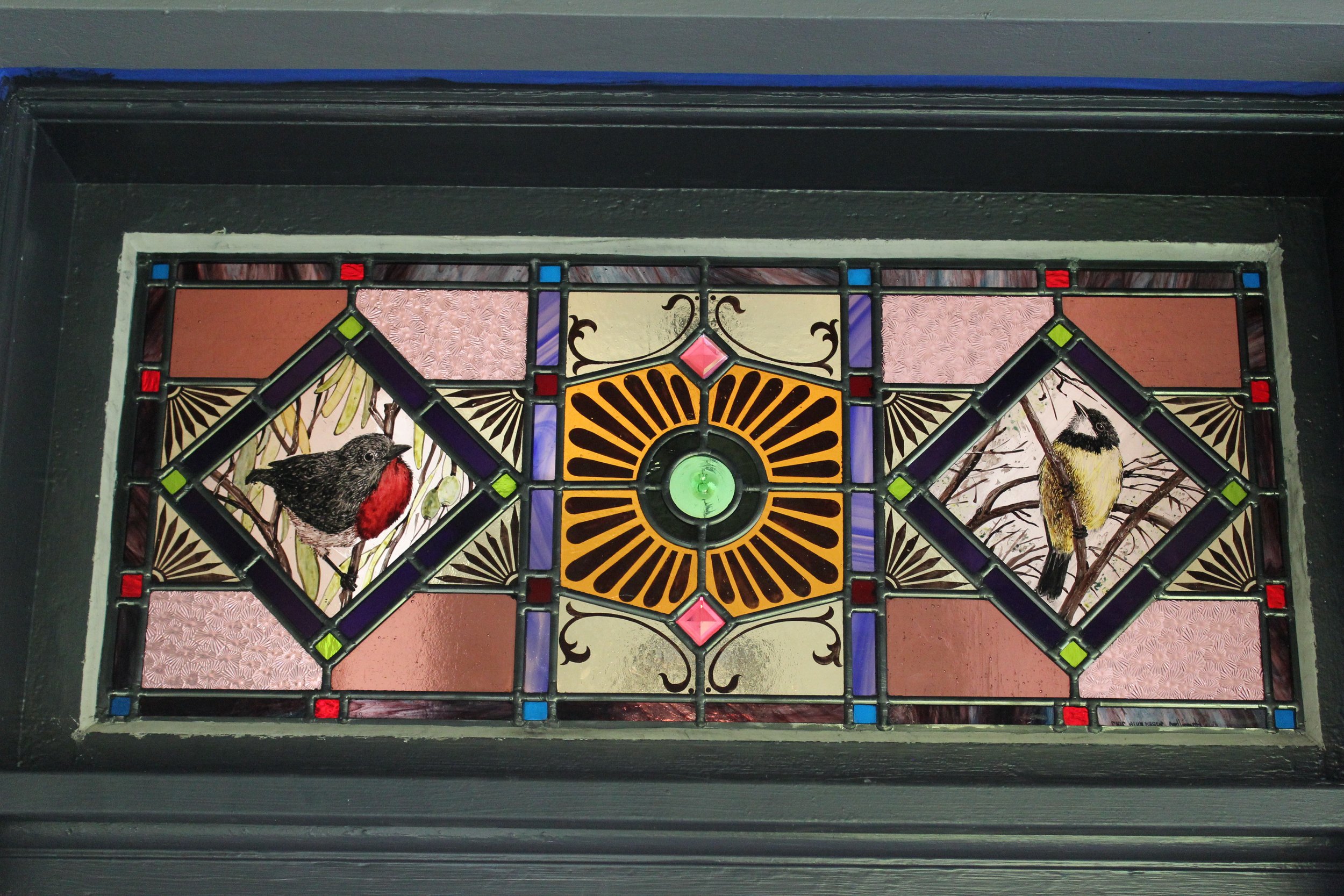Interview
Jeffrey Hamilton
Jeffrey was born in Stanmore, NSW in 1952. He received his Interior Design Diploma from the NAS Randwick Campus in 1974. His previous stained glass commissions include: Conversion of St Paul, clerestory, St Peters Anglican E.Maitland NSW (2018); Angel Bearing Light, Wesley Uniting Church, Forest ACT(2018); Dorcas window, St Andrew’s Presbyterian Church Nowra, NSW (2016); among others. His previous presentations include: Designing for Stained Glass, wkend wkshop Peli Glass, The Hague Netherlands (2017); Performance installation for GLAAS INC, Melbourne Polytechnic, Vic (2017); Beginners Leadlight, Sydney Community College, Rozelle NSW (2015); among others. He has won 2nd Prize, Contemporary, Singleton/Rotary Art Show, NSW (pastel on paper), 2021; Finalist, The Alice Prize, NT, collaboration with John Doe (stained glass work), 2021; Finalist, Ranamok, travelling exhibition, Qld, NSW, VIC (painted glass vessels), 2014; among other awards. His previous exhibitions include solo Unpublished [& rarely seen] Works m2 Gallery, Surry Hills, NSW (2018); group Herring Island Festival, Contemporary Art society of VIC (2018); group GLAAS@Melbourne Polytechnic, VIC (2017); among others.
What is your background and how did you start your journey in the art world?
“Always curious, creative and inquisitive, I divided my time as a youngster between science and art, gardening and exploring the natural world. After graduating from High School with Level One Art but having been warned off a career as an artist, I enrolled in the Interior Design Diploma, a 4 year full time course under the auspices of The National Art School in Sydney. This took me in the direction of applied arts and eventually I landed a traineeship with Stefan Moor, a Hungarian-German stained glass artist who emigrated to Australia following the end of WWII and became a seminal figure in the development of contemporary stained glass in Australia. Returning from an eight week cultural tour of the United States and Mexico, I found myself unemployed mid-1981. I subsequently registered for unemployment benefits, and then the following week registered the business name Hamilton Design. I’ve been in private practice as an artist ever since. The business name evolved into Hamilton Design Glass Gallery, but after closing the Lane Cove gallery in 1996 I removed that from the registered name.”
What does your work aim to say? Does it comment on any current social or political issues?
“My oeuvre is two-fold: commissioned stained glass artwork and non-commissioned or autonomous work in both glass and other media. Commissioned work is a response to brief, a budget and a building. As such it must address the particular parameters of the brief and satisfy the desires of the client. However, it must also satisfy my own aesthetic principals. I refuse to produce anything that doesn’t meet my personal criteria of worthiness: is it actually worth making this work? Am I adding something of integrity to the world? Something that others may enjoy, remark upon, or cause them to pause and think? Similar principals apply to those artworks initiated solely by my desire to create, even while delving into the unknown. I often experiment- play is an important aspect of making- as is the search for aesthetic meaning. By juxtaposing apparently disparate elements in a collage or assemblage for instance, new meanings and associations evolve, often unexpectedly and sometimes much later, after the work is finished and being contemplated as a viewer rather than a maker. For an artist is both. Sometimes one experiences a lightbulb moment years after completing an artwork, seeing relationships to previous works, or even the work of other artists, that were not obvious at the time of making. And yes, occasionally I do comment on social or political issues, when sufficiently moved to do so. An ongoing body of work immortalises in painted and fired glass the great heroes of our modern age: figures such as Bashar al Assad, President Nicholas Maduro or Senior General Min Aung Hlaing, all lauded by their minions, held in the highest esteem, awarded medals and honours, but murderers and corrupt scoundrels all. The work began quite some years ago with Mamoud Ahmadinijad, after the public hanging of two teenage boys for engaging in sex with another boy. I then set myself a target of creating 13x such portraits of these great men (they’re almost always men). I’m not even half way through. It’s tough work, and there are so many more heroes worthy of inclusion.”
Do you plan your work in advance, or is it improvisation?
“Both, depending what I’m doing. With stained glass there is limited scope for spontaneity in the execution. Certainly designing can be free and loose, but once a design is more or less settled, the making is very process-driven and the possibility of change diminishes the more one progresses with the work. With rare exceptions, a stained glass work is preceded by a one-to-one drawing, known as a cartoon or cartouche, generally in charcoal or graphite or sometimes in colour. This is then translated into a working drawing, known as the cutline. When painting on canvas or on paper, or making assemblages or collage, it’s very much improvisation. I never know the end result until I get there. This is part of the joy and excitement of creating. But you know when a work is finished. When you have accomplished what you set out to achieve, even if that aim is something nebulous and undefined, and you allow the artwork to determine the direction it wants to go, the work eventually speaks to you, saying “I am here.””
Are there any art world trends you are following?
“I don’t follow current art world trends. I follow my own star. My aesthetic sensibility is rooted in art history, from ancient art through all the ages, into Modernism and Contemporary Art. But trends change so much, they are fleeting, and it is not possible to even keep up if you tried. I remain open to new ideas and am interested in learning new techniques or delving into new aesthetic ideas. But essentially I stay true to my own understanding of what is good, what has virtue and worth, what conveys meaning. Having said that, I am particularly enamored of the magnificent art of the Renaissance and Baroque periods and also the Pre-Raphaelite movement. A lot of my religious stained glass makes reference to works from these periods, sometimes quoting directly such masters as Caravaggio and Ludovico Carracci, or Edward Burne-Jones, in a nod to Post-Modernism. And my abstract work has evolved through a love of Kandinsky, Klee, the Supremacists and De Stijl, Georg Meisterman in stained glass, to the Americans Ellsworth Kelly and Richard Diebenkorn and the Australians Godfrey Miller, Frank Hinder, David Aspden and others. Undeniably my major influence throughout all this has been my mentor Stephen (or Stefan) Moor. I spent three years working under Moor, from 1978 until1981.”
What process, materials and techniques do you use to create your artwork?
“I am a multi-disciplinary artist working in both 2D and 3D. My primary medium is stained glass where I employ traditional techniques along with a more contemporary approach, sculpting the lead where I need special effects and engraving or sandblasting the glass. Vitreous paints are often fire onto the glass prior to lead construction. A favoured medium is pastel on paper, but I also use acrylic, gouache and sometimes oil paints or oil pastels. Drawing from life is a pleasurable activity, one which I don’t devote as much time to as I would like. When making sculpture, it’s always assemblage, generally employing mechanical joining methods; I rarely carve into stone or other materials.”
“I often experiment- play is an important aspect of making- as is the search for aesthetic meaning.”
What does your art mean to you?
“My art is my life. It defines who I am. While I am also a keen gardener, greening the local neighbourhood, and enjoy all the usual social interactions of contemporary life, especially dancing and music, I couldn’t not make art.”
What’s your favorite artwork and why?
“Impossible to settle on one. I have such broad tastes, embracing so many styles and media. However, a small blown glass vase just 23cm tall, made by Holy Grace, purchased in 2020 from Beaver Galleries in Canberra, is my current favourite. It’s elegant, tapering form and vibrant green and orange, so subtlety blended, gives me much joy; I see it every day.”
Have you had any noteworthy exhibitions you'd like to share?
“I have participated in hundreds of group exhibitions throughout my life and throughout Australia, but have only ever staged 7x solo exhibitions, apart from “Open Studio” shows, each one of them notable. Each of these shows incorporated works in a variety of media, including stained glass, works on paper and assemblage. Perhaps the most notable, certainly the most mature, is also the most recent, “Unpublished [and rarely seen] Works” at M2 Gallery, Elizabeth St Surry Hills in 2018. Well attended, with satisfactory sales, this show surveyed several decades of art-making. Several older and damaged pieces were restored or re-worked especially for this exhibition. The show was carefully curated to include works I considered to be most significant amongst my oeuvre. I was featured at the Ausglass exhibition “Interchange” at M16 Gallery in Canberra, 2019 and later a finalist in The Alice Prize, 2020 and “Cloud Goddess,” in collaboration with Sydney glass artist Mark Eliott for his solo exhibition “Essence of Cloud”, April 2021, Craft & Design Centre, Canberra, with a second iteration in 2021 at Ellipsis Gallery, Woolloomooloo. A distillation of this exhibition is currently showing as part of “Worlds of Infinite Possibilities” at Horsham Regional Gallery, Victoria. I enjoy the collaborative process very much indeed, for many reasons, and both of these works rate amongst my best.”
Website: stainedglass.com.au
Instagram: @jeffhamiltonglassartist
Other links: www.facebook.com/JHamiltonStainedGlass


